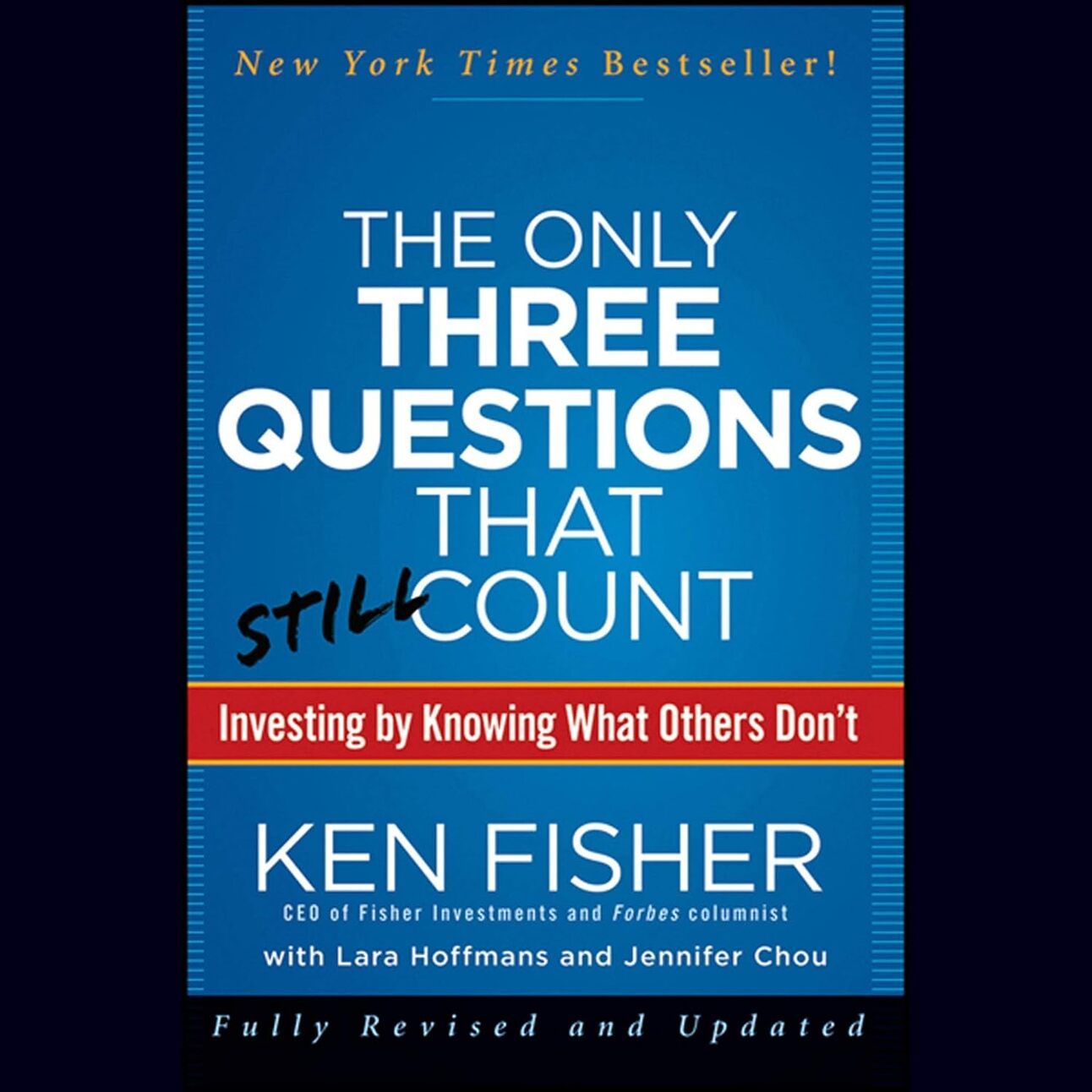- The Wealth Expedition
- Posts
- Politics and the Stock Market
Politics and the Stock Market
How should we think about stock markets in light of the Presidential election?

Our weekly newsletter features the following sections:
First time reading? Subscribe for weekly content here.
“All summer, and far into the autumn, perchance, you unconsciously [walked past] the newspapers and the news, and now you find it was because the morning and the evening were full of news to you. Your walks were full of incidents.
You attended, not to the affairs of Europe, but to your own affairs in Massachusetts fields.
If you chance to live and move and have your being in that thin stratum in which the events that make the news transpire — thinner than the paper on which it is printed — then these things will fill the world for you.
But if you soar above or dive below that plane, you cannot remember nor be reminded of them.
Really to see the sun rise or go down every day, so to relate ourselves to a universal fact, would preserve us sane forever.”
-Life Without Principle by Henry David Thoreau

NEWS
What Happened Last Week
Donald Trump was elected to the Presidency for his second term.
The DOW Jones rose 3.6% on Wednesday, registering the highest post-election-day result since 1896.
The Fed cut interest rates by 25 basis points (0.25%) to 4.50%-4.75%.
Long bond yields rose after the election, betting on continued inflation.
Services Purchasing Managers Index (PMI) registered the highest level since July 2022, coming in at 56 (50+ indicates likely future expansion).
Consumer spending rose 3.7% in Q3, the most since early 2023, mainly due to rising incomes and continued low average unemployment.
Investor sentiment improved toward optimism after bordering on fear the prior week, according to the AAII Investor Sentiment Survey and Fear and Greed Index.
How I See It
Presidential elections can cause emotions to run high.
We follow the story of our favorite candidate for months, becoming enthralled with their story and jumping on board with their vision for the future. And we become emotionally connected with them.
So depending on whose story we were following, we either feel exuberant or devastated following the election results.
Unlike us, markets are neutral when it comes to political parties, thank goodness! But they very commonly rise after an election. Why? Because the future becomes just a bit clearer as uncertainty fades away.
Three things drive stock markets: economics, sentiment and politics.
Right now, the economics look reasonably strong. So strong, in fact, that some fear Trump’s tax cuts could boost growth to the point of reaccelerating inflation. That along with the proposed tariffs.
But here’s the thing. The idea that strong economic growth drives materially higher inflation is mostly a myth. As Milton Friedman proved long ago, inflation is simply a monetary phenomenon: too much money chasing too few goods. It is largely dependent on the rate of increase in money supply.
Economic growth and rising wages have a much smaller effect on inflation than many assume. Supply chain disruptions and accelerated money creation tend to be the main culprits. Remember that the economy continued to grow while wages rose from 2022-2024, all the while inflation fell steadily from its peak in June 2022.
Wage growth usually follows inflation, not the other way around.
And tariffs don’t have quite the impact that people think they do on inflation, either. Consider the tariffs placed on China in Trump’s last Presidency. Much of the rise in costs is eaten by the business while they determine other ways to source products and parts, doing everything possible to not pass on the price increase to consumers.
But these ideas still grip the minds of most investors, which means it keeps markets cautious. That’s a good thing! That’s how markets grow.
And remember that, as much attention is given to the Presidential election, a President’s powers are limited and balanced by the two other branches of government. This is not a one-man show, as much as the legacy media wants to instill that illusion.
Normally, markets don’t particularly like one party dominating both houses of Congress and the Presidency. But the reason is due to uncertainty in regulatory changes.
Trump ran on the plan of cutting regulation, not increasing it. So the reaction of markets to a Republican Congress is difficult to predict, though it’s not likely to cause any more than temporary volatility while the new rhythm comes into clearer focus.

PARADIGM SHIFT
Politics and the Stock Market
Donald Trump has been elected the next President of the United States.
Depending on your political leanings, this comes as either good news or bad news.
But on an economic level, how do markets react under Republican versus Democratic Presidents?
According to The Motley Fool, since 1957, the S&P 500 has achieved:
10.2% compound annual growth rate under Republican Presidents and 9.4% under Democratic Presidents.
9.9% median average return under Republican Presidents and 12.9% under Democratic Presidents.
So has the market performed better under Republicans or Democrats? Well, it depends on how you measure it.
On a year-by-year analysis, Democratic Presidents have seen better market returns. Over a longer-term analysis considering the entire President’s term of compounded returns, Republican Presidents win out.
What can we glean from this?
The fact here is that political parties play an almost indistinguishable role in how markets perform. Markets do well regardless of who holds the office of President.
Markets grow under both, and that’s growth we want to capture!
But there is an interesting pattern that has played out historically.
Ken Fisher observes that Republicans, on average, tend to have a better election year than their inaugural year.
In 2024, the election year, the S&P 500 has grown about 26%. The inaugural year for Trump will be 2025. The average growth for such a year is 2.6% (using data from 1925-2021).
Now remember, just because we quote the average doesn’t mean there aren’t big variations either side of that number.
In 2017, the S&P 500 saw 18.74% return in Trump’s first inaugural year.
In 2001, Bush’s inaugural year, it dropped -13.04% when the dot-com bubble burst.
Unless there’s a solid reason to think that a major weakness has been overlooked by nearly everyone, then odds are that this bull market can continue growing even if it means high volatility over periods of weeks or months.


FINANCIAL TOOL
Internal Rate of Return
Last week, we looked at how to estimate the Net Present Value of a business idea or project.
If you’ve input the estimated cash flows, you can take one more simple step to capture another useful number.
The internal rate of return.
If you need a financial calculator, you can use a free app such as BA Financial Calculator on Google Play or BA Financial Calculator for iPhone.
Once you’ve entered the cash flows from last week, press IRR and then CPT.
This number reveals your estimated return on investment.
Using last week’s example of investing $100,000 in a business earning $30,000, growing the profits and then reselling after ten years, the IRR is 37.75%.
We can compare that with, say, 8% that we might expect to make on average investing in stocks.
That tells us that, all else being equal, the business idea is the better option in terms of potential return.
Of course, the risk and time commitment are other factors that have to be weighed.
If IRR and NPV give conflicting answers to which business or project you should take on, it’s generally best to rely on the NPV primarily.
Estimating these values can have a powerful impact on your perspective and willingness to make a life-changing decision, even when the future is uncertain.

HERE’S HOW I CAN HELP
FUTURE RESOURCES ARE IN THE WORKS!
You will have access to in-depth digital courses in the next few weeks.
The first course will cover strategies for low risk investing and the principles of risk management.
A larger course will be released after that which will reveal how to create a massive surplus monthly cash flow that perpetually increases through a combination of budgeting, increasing earning potential and investing.
We will be focused on comprehensive wealth which values not only money but also time and freedom.
Until then, take a look at Ken Fisher’s popular book The Only Three Questions That Still Count. I’ve long been familiar with Ken’s investing philosophy, and he is one of a very few money managers that I have immense respect for as an investor. The lessons you learn in this book are priceless when it comes to successful investing. It can be a bit technical, but Ken has a way of making complex subjects simple. It’s a gift of his. So although it dives deep, it also makes for an enjoyable and interesting read.
The Only Three Questions That Still Count by Ken Fisher
This post contains affiliate links, which means I may earn a commission if you make a purchase through these links at no additional cost to you. Thank you for your support!

I’d love to hear from you. Let me know what you’d like to see in upcoming newsletters, articles, or a digital course at Contact Us - The Wealth Expedition.

